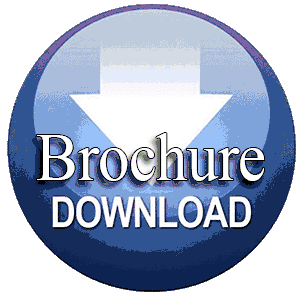About Webinar
Conference Series LLC Ltd is pleased to invite you to participate in “13th Webinar on Nanotechnology and Nano Medicine” to be held during March 30, 2022. Nanomedicine Webinar 2022 highlighting the theme “Novel attributes in Nanotechnology and Nanomedicine” provides an excellent opportunity to share views, exchange knowledge and establish research collaborations & sponsoring. Conference Series LLC LTD is a prestigious association that sorts out 1000+ Global Events Every Year over the USA, Europe and Asia with help from 1000 progressively logical social orders and Publishes 700+ Open access journals which contain more than 1,00,000 famous characters, presumed researchers as article board and arranging advisory group individuals. Conference Series LLC LTD Webinars make the ideal stage for worldwide systems administration as it unites famous speakers and researchers over the globe to a most energizing and paramount logical occasion loaded up with a lot of illuminating intelligent sessions, universal workshops, world-class global shows and notice introductions.
Sessions
Session 1: Nanotechnology
Nanotechnology manages the investigation of littler structures with a size range between 0.1 to 100 nm. It covers different regions like biophysics, atomic science, and bioengineering and sub strengths of medication, for example, cardiology, ophthalmology, endocrinology, oncology, and immunology and so forth...
Pharmaceutical Nanotechnology applies the techniques and standards of Nanoscience and Nano medication. Pharmaceutical nanotechnology is currently settled as specific region for medication conveyance, diagnostics, prognostic and treatment of ailments through its Nano-designed apparatuses.
Session 2: Nano Medicine
Nanomedicine seeks to deliver a valuable set of research tools and clinically useful devices in the near future. The National Nanotechnology Initiative expects new commercial applications in the pharmaceutical industry that may include advanced drug delivery systems, new therapies, and in vivo imaging. Nanomedicine research is receiving funding from the US National Institutes of Health Common Fund program, supporting four nanomedicine development centers. Nanomedicine sales reached $16 billion in 2015, with a minimum of $3.8 billion in nanotechnology R&D being invested every year. Global funding for emerging nanotechnology increased by 45% per year in recent years, with product sales exceeding $1 trillion in 2013. As the nanomedicine industry continues to grow, it is expected to have a significant impact on the economy.
Session 3: Nano Biotechnology
Nano biotechnology is the application of nanotechnologies in biological fields. Chemists, physicists and biologist each view nanotechnology as a branch of their own subject and collaborations in which they each contribute equally are common. One result is the hybrid field of Nano biotechnology that uses biological starting materials, biological design principles or has biological or medical applications. The integration of nanomaterials with biology has led to the development of diagnostic devices, contrast agents, analytical tools, therapy, and drug-delivery vehicles, bio nanotechnology research is still in its infancy.
Session 4: Nano Electronics
Nano electronics is the term used in the field of nanotechnology for electronic components and research on improvements of electronics such as display, size, and power consumption of the device for the practical use. This includes research on memory chips and surface physical modifications on the electronic devices. Nano electronics cover quantum mechanical properties of the hybrid material, semiconductor, single dimensional nanotubes, nanowires, and so forth. Well-developed Nano electronics can be applied in different fields, and are especially useful for detecting disease-causing agents and disease biomarkers. As a consequence, point-of-care detection became popularized due to the involvement of Nano electronics. In this chapter, we discuss documented bio sensing applications of Nano electronics.
Session 5: Nano Particle
A nanoparticle or ultrafine particle is usually defined as a particle of matter that is between 1 and 100 nanometers (nm) in diameter. The term is sometimes used for larger particles, up to 500 nm, or fibers and tubes that are less than 100 nm in only two directions. At the lowest range, metal particles smaller than 1 nm are usually called atom clusters instead. Nanoparticles are usually distinguished from micro particles (1-1000 µm), "fine particles" (sized between 100 and 2500 nm), and "coarse particles" (ranging from 2500 to 10,000 nm), because their smaller size drives very different physical or chemical properties, like colloidal properties and ultrafast optical effects or electric properties.
Market analysis
The Nanomedicine market in Asian country is anticipated to grow at the best CAGR of thirteen.4% from 2016 to 2023. Nano medicines are associate rising and most promising technology within the twenty first century. This is often thanks to the very fact that it involves the drug development at molecular scale that helps in simple bar, diagnosis, treatment, and regeneration of tissues and organs. Within the designation field, nanomedicine could be a cost-efficient technique because it needs minimum quantity of biological sample that reduces consumption of disposables and reagents.
The global nanomedicine market is projected to grow at a compound annual rate (CAGR) of 16.3% from 2014 through 2019 and reach $528 billion by 2019..Global Nanomedicine Market accounted for $111,912 million in 2016, and is anticipated to reach $392.80 billion by 2023, registering a CAGR of 17.1% from 2017 to 2023. Nano medicine sales reached $16 billion within the year 2015, with a minimum of $3.8 billion in engineering R&D being endowed each year. Funds for engineering augmented by forty fifth each year in recent years , with product sales Olympian $1 trillion in 2013.



